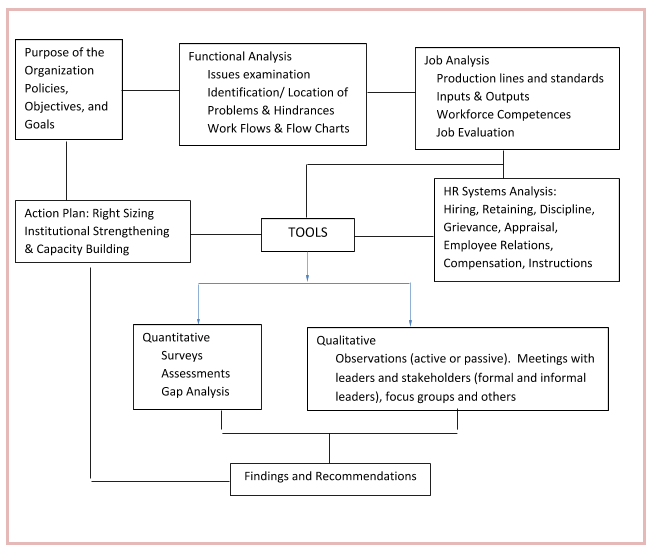A Common Question
Human Resource (HR) professionals are often asked: “Which recruiting strategies are bringing our organization the greatest returns on investment?” To be able to answer this question you need to be collecting data on an ongoing basis. Leaders need this type of information to make important decisions.
Essential Metrics
HR leaders who are on top of things share valuable information with your organization’s CEO, CFO, COO, VPs, and other executives. To make crucial decisions, an organization’s leaders demand the following metrics from the HR Department: cost per hire, time to hire, source channel efficiency, assessment effectiveness, and new hire quality. To make your HR leader look good at the C-level, the HR Department needs to collect the relevant data and have these numbers available upon demand.
System Audit
There are many functions in an organization as well as many systems. Organizations that practice strategic management frequently review all their operating systems to ascertain what is working well, what is lacking, and what can be improved or re-engineered. The HR system is vital to an organization’s success.
A system audit is defined as:
“… a disciplined approach to evaluate and improve the effectiveness of a system. Audits are carried out in order to verify that the individual elements within the system are effective and suitable in achieving the stated objectives. The system audit also provides objective evidence concerning the need for the reduction, elimination and most importantly, prevention of non-conformities”
(System audits and the process of auditing. https://www.ispatguru.com/system-audits-and-the-process-of-auditing/ Retrieved 24/02/2020 at 10.04 a.m.).
HR Audit
A human resources audit (hereinafter HR Audit) is a type of system audit. It is a systematic process used to gather objective data to ascertain the “people” needs of an organization in keeping with its mission and functions.
“Like any audit, the Human Resource Audit is a formal process, which is designed to examine the strategies, policies, procedures, documentation, structure, systems and practices with respect to the organization’s human resource management. It systematically and scientifically assesses the strengths, limitations, and developmental needs of the existing human resources from the larger point of view of enhancing organizational performance (Concept of Human Resource Audit.” (http://www.whatishumanresource.com/Human-Resource-audit Retrieved 24/02/2020 at 11.07 a.m.).”
Apart from ongoing data collection, HR Audits are recommended every three to four years. During HR Audits it is common to find two or three jobs with different job titles but with identical job descriptions. The longer the interval between audits the larger the number of problems that need to be solved.
How is a HR Audit done?
A HR Audit examines the entire human resources management system and assets. It looks at the existing human capital and the specific processes that affect it. Specifically, a HR Audit evaluates the efficiency and effectiveness of the following HR functions: recruitment/sourcing, screening tools, selection decision making procedures, and placement criteria. A HR Audit includes analyses of new hire quality, assessment effectiveness, source channel efficiency, time to hire, cost per hire, and other such key performance indicators used by the specific organization.
Being a system audit, a HR Audit also includes analyses of
- job descriptions with recommendations for improvements to meet the organization’s future needs
- employee relations management mechanisms
- grievance and disciplinary procedures
- human resources management policies, e.g., promotion criteria
- compensation, pay scale, salary grades
- the human assets and database management system (Human Resources Information System)
- the performance evaluation system.
The HR Audit incorporates the use of both qualitative and quantitative data; hence it uses a mixed-methods research design. At the start of the audit, basic text data from conversations with business leaders, interviews with executives, and documents such as job descriptions and job advertisements, are collected and analyzed.
These data answer questions pertaining to: the business of the organization; how it conducts its business, i.e., what are the functions, operations and processes; its employees, i.e., the number of employees, positions in the organization and inter-relationships among them (includes review of organizational chart); the hiring system, the employee relations mechanisms, health and safety, security, the sourcing channels, the screening process, the number and quality of the personnel selection assessments, the performance appraisal tools and process used with each job cluster, the frequency of observations for coaching and skill improvement, the frequency of summative performance evaluations, and other data of interest to the HR leaders in the specific organization.
The audit team also observes how business is conducted; who does what, when they do it, how they do it, what tools or equipment they use, the operating environment, the use of the chain of command, as well as employee interactions with each other, subordinates, superiors, and customers/clients. These observations give insights into customer satisfaction/loyalty, the organization culture, work ethic, communication effectiveness, quality of collaboration, accountability, and productivity.
The HR audit is a strategic intervention that requires the sponsorship of top leadership. It also requires the sanction of the governance body (Board) and worker representatives (Union). It must obtain cooperation of middle managers, supervisors, and the frontline professionals (production and service personnel).
Communication with everyone in the organization must be clear. Special care must be invested to avoid sending mixed messages or a message of impending organization demise or downsizing. Even though downsizing may become a recommendation after the data is analyzed, a HR Audit is not designed with downsizing as a predetermined goal. For the HR Audit to be successful, stakeholders must be comfortable to share their opinions honestly without fear of reprisal.
Audit Process
As shown in Figure 1, the audit process begins with open, effective communication and then moves on to the technical procedures. The numerous procedures start with the collection of data relevant to the business of the organization, what it does, who does what and the mechanisms that support personnel in completing their assigned duties.
Research methods such as on-site observations, focus groups, interviews and surveys are used to collect qualitative data. Numerical job performance measurements and productivity metrics facilitate quantitative analyses such as comparisons of production and targets or quotas. In terms of production comparisons, the audit team may conduct gap analyses of the quantity and quality of goods produced per day and compare that data to the daily quotas. During analyses data could be aggregated by month, quarter, or year.

Once the data collected satisfies quality assurance standards such as reliability, the data can then be analyzed as required. Results from these analyses are interpreted to formulate recommendations. These recommendations are included in a written report and discussed with the organization’s leadership. Later, it is a good idea to share findings with a cross-section of the stakeholders, particularly those who were involved in the focus groups, interviews, and surveys. The outcome of the discussions with leadership as well as with other job clusters, will inform initiatives and proposed actions to be captured in an action plan for moving the organization forward.
The duration of an audit depends on the size and complexity of the organization, the use of technology, and other relevant factors. Typically, a HR Audit can be accomplished within three months to four months. If the audit takes longer than six months then that is a signal that major organization re-engineering may be required.
References
Cascio, W.F. 1992. Managing Human Resources: Productivity, Quality of Work Life, Profits. New York: McGraw-Hill.
Cummings, T.G. and Worley, C.G. 1975. Organization Development & Change. 6th ed. Soth-Western College, Cincinnati.
About the Author
Dr. Kerry Sumesar-Rai is a Management and Organization Reengineering Consultant. He leads program advisory services, audits, and workshops. Armed with proven results and wisdom, he helps clients manage changes in public policy, leadership/management doctrine, and cultural re-engineering. His record of improving internal systems in the public, state and private enterprise sectors demonstrates his ability to facilitate a collaborative approach among leadership teams. As author and life-long learner, his scope of interests which span Strategic Planning, Policy Analysis, and Operations Project Management, include completing a Leadership Ph.D.

